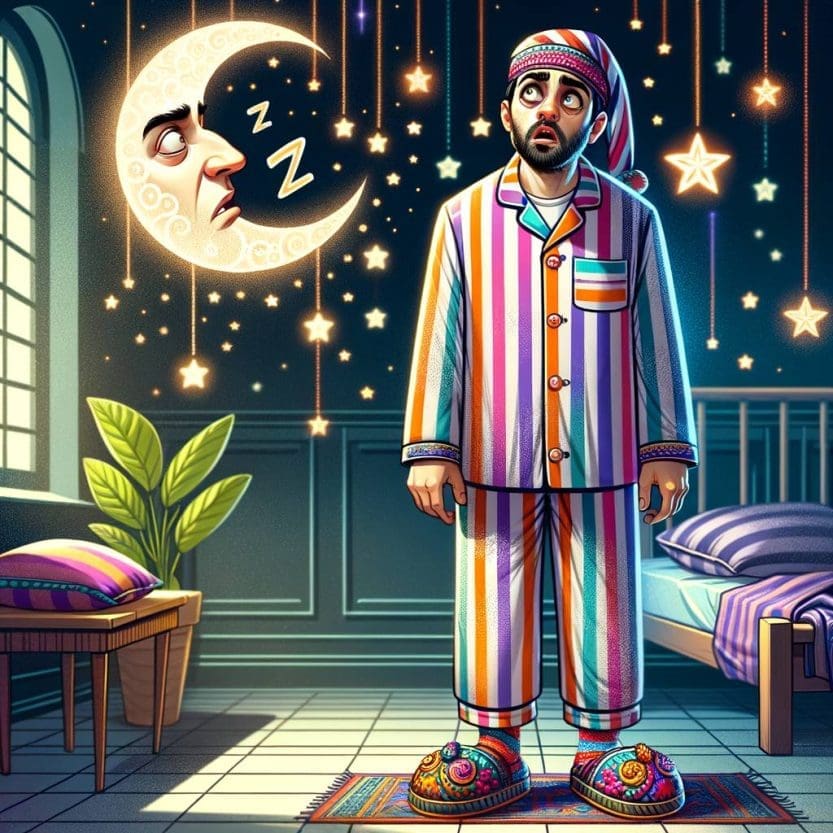Why Does Sleepwalking Occur: Unraveling the Mysteries Behind This Enigmatic Phenomenon
Sleepwalking occurs during non-REM sleep when the brain is not fully awake, causing the body to act out dreams. This happens due to a disruption in the sleep cycle, often triggered by stress, sleep deprivation, or certain medications.
The phenomenon is more common in children, but can also occur in adults. Sleepwalking can pose safety risks and may be a symptom of an underlying sleep disorder or other health conditions. Understanding the triggers and seeking appropriate treatment can help manage and prevent sleepwalking episodes.
Effective management may include stress reduction techniques, healthy sleep habits, and medical interventions as necessary. It is important to consult a healthcare professional for proper evaluation and guidance in addressing sleepwalking issues.

Credit: www.thechildrenssleepcharity.org.uk
The Basics Of Sleepwalking
Sleepwalking, also known as somnambulism, is a sleep disorder characterized by performing complex activities while asleep. This state of partial arousal occurs during non-REM (rapid eye movement) sleep, typically within the first few hours of falling asleep. The exact cause of sleepwalking is still being studied, but it’s believed to involve a combination of genetic, environmental, and physiological factors.
Definition And Characteristics
Sleepwalking involves a wide range of behaviors, from simply sitting up in bed to walking around and even engaging in potentially dangerous activities. During a sleepwalking episode, individuals are in a state of altered consciousness, with impaired judgment and coordination. Despite the name, sleepwalkers may not always be walking; they might also perform tasks like cooking, driving, or even dressing themselves.
Frequency And Age Group Affected
Frequency: Sleepwalking is more prevalent in children, with studies showing that about 10-30% of kids experience it at some point. However, it can also persist into adulthood, impacting around 2-4% of the adult population. Episodes may occur infrequently or multiple times in a night, often with no recollection upon waking.
Age Group Affected: Sleepwalking typically peaks between the ages of 4 and 8, and tends to decrease in frequency as individuals reach adolescence. While it can affect people of any age, it’s more common in those with a family history of the condition or who have other sleep disorders.

Credit: puffy.com
Causes Of Sleepwalking
Sleepwalking can be caused by factors like fatigue, stress, irregular sleep patterns, and alcohol consumption. Genetics and certain medications can also contribute to this condition. Sleepwalking often occurs during the deep stages of sleep and is more common in children.
All these factors can lead to episodes of sleepwalking.
Sleepwalking, also known as somnambulism, is a sleep disorder that affects individuals of all ages. It can be a puzzling and sometimes frightening experience for both those who sleepwalk and those who witness it. While the exact cause of sleepwalking is not fully understood, several factors can contribute to its occurrence. These include genetic factors, medical conditions, and medications.Genetic Factors
Genetic factors play a significant role in the occurrence of sleepwalking. Research suggests that sleepwalking tends to run in families, indicating a genetic predisposition. If one or both parents have a history of sleepwalking, their children are more likely to experience sleepwalking episodes themselves. In particular, certain genes are believed to be associated with an increased risk of sleepwalking. These genes can affect the regulation of sleep and arousal mechanisms in the brain, leading to the occurrence of sleepwalking episodes.Medical Conditions And Medications
Sleepwalking can also be triggered by certain medical conditions and medications. Medical conditions such as sleep apnea, restless leg syndrome, and epilepsy have been linked to an increased likelihood of sleepwalking episodes. These conditions can disrupt the normal sleep patterns and increase the chances of sleepwalking. Additionally, certain medications can contribute to the occurrence of sleepwalking. Drugs that affect the central nervous system, such as sedatives and hypnotics, may alter the sleep-wake cycle and increase the likelihood of sleepwalking episodes. It is essential to note that not everyone who has these medical conditions or takes these medications will experience sleepwalking. However, individuals with these conditions or using these medications may have an increased risk compared to the general population. In conclusion, sleepwalking can be caused by a combination of genetic factors, medical conditions, and medications. Understanding these potential causes can help individuals and their healthcare providers identify and manage sleepwalking episodes effectively. If you or someone you know experiences sleepwalking, seeking medical advice is recommended to determine the underlying causes and develop a suitable treatment plan.Triggers And Environmental Factors
Triggers and environmental factors play a significant role in understanding why sleepwalking occurs.
Stress And Anxiety
Sleepwalking can be triggered by heightened stress levels and anxiety.
Sleep Deprivation And Disruptive Sleep Patterns
Lack of sleep and irregular sleep routines can contribute to sleepwalking episodes.
Managing And Preventing Sleepwalking Episodes
Sleepwalking episodes can be managed and prevented by understanding the underlying causes of sleepwalking. Factors such as sleep deprivation, stress, and medication side effects can contribute to sleepwalking, making it important to prioritize quality sleep and address any underlying issues to reduce its occurrence.
Creating A Safe Sleep Environment
Creating a safe sleep environment is crucial for preventing sleepwalking episodes. – Remove obstacles in the bedroom to prevent tripping or falling. – Secure windows and doors to avoid wandering during sleep. – Keep pathways clear to minimize the risk of accidents. – Maintain a consistent bedtime routine to promote better sleep habits.Seeking Professional Help And Treatment Options
Consulting a professional can provide valuable insights on managing sleepwalking. – Discuss symptoms with a healthcare provider for proper evaluation. – Explore therapy options such as cognitive-behavioral therapy. – Consider medication under the guidance of a medical professional. – Implement stress-reduction techniques to improve overall sleep quality.
Credit: www.madisonlibrary.org
Frequently Asked Questions On Why Does Sleepwalking Occur
Is There A Reason For Sleepwalking?
Sleepwalking, or somnambulism, occurs due to a disturbance in the sleep pattern. It’s more common in children and can be triggered by factors such as lack of sleep, stress, certain medications, or underlying sleep disorders.
Why Shouldn’t You Wake Up A Sleepwalker?
Waking up a sleepwalker can cause confusion and disorientation. It is best to gently guide them back to bed. Interfering could startle them and lead to injury.
How Does Sleepwalking Happen In The Brain?
Sleepwalking occurs due to partial arousal of the brain during non-REM sleep, causing motor actions and walking while still asleep.
What Do Sleepwalkers See?
Sleepwalkers typically have their eyes open but are in a state of deep sleep. They may see distorted or dream-like versions of their surroundings.
Conclusion
In understanding why sleepwalking occurs, it’s important to consider various factors like genetics, stress, and sleep disorders. By prioritizing better sleep hygiene and managing stress, it’s possible to reduce the incidence of this sleep disorder. Seeking professional help and maintaining healthy sleeping habits can be pivotal in addressing and managing sleepwalking.





